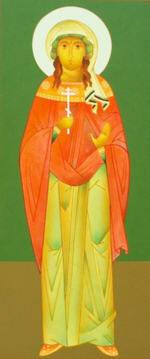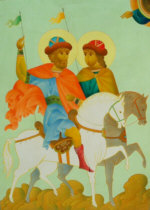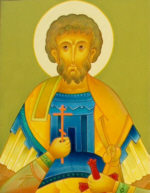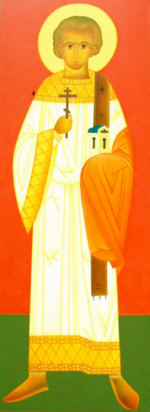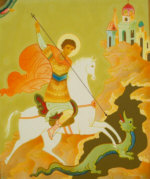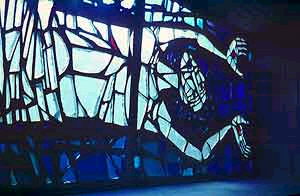
Martyrs
For larger picture representation and description of the icon, please click on the picture.
The word martyr comes from the Greek martys = “witness”. Generally, anyone who suffers persecution because of his "ideas"
(he makes himself or is made a martyr), but in particular Christians who, facing death or threatened with death, steadfastly maintain the profession of their faith.
In Judaism too there are many examples of staunch
suffering (the Mak-Kabaer letters). During this time, a rich repertoire of motives developed to which the New Testament and the Church were able to contribute. The repertoire also took in the establishment of a distinct
“martyr literature” in the form of reports, legends and apocalypses (Isaiah’s martyrdom and Ascension).
According to the New Testament, the witness Jesus Christ had to defend His beliefs in public.
(Matthew 10,18). The martyr was treated with respect (Stephen: Apostles 7).
However, the idea of a martyr’s special relationship with God did not emerge until the time of the New Testament. It was
motivated by the desire to suffer what Jesus Christ suffered. This is why martyrdom was given the same merit as baptism ("blood baptism"). From the second century onwards the Church has revered the martyrs as
saints. This has led to celebration of the saints in this century and in this new millennium where, to this day, many must die for their religious or political convictions (fighting for human rights, for freedom, for justice,
for independence). Now what about that?? From the custom of celebrating sacrificial mass on the martyrs’ graves came the custom of placing martyrs' relics in altars.
From about 150 AD onwards, the
collecting of reports about martyrs in so-called “martyrs’ files” began (acta martyrium). These were reports (court protocols, eye-witness accounts) of staunch suffering, of interrogation and death of
Christian and also Jewish martyrs. From the third century onwards, these records were recited in the liturgy on the annual celebration day of the respective saint (Martyrologium). The motives for iconography (painting
books) were set up in accordance therewith.
Since the fourth century, the Greek Church celebrates all martyrs during Pentecost whereas, the Roman Catholic Church honours them on 1st November since the eighth
century.

